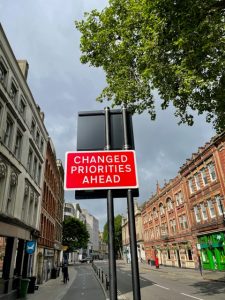Many readings and lectures about internal work cultures resonated with me because they reminded me of my initial interest in human-centered design and librarianship.
My journey began at the San Francisco Unified School District, where I encountered an outdated database and application system that struggled to meet user needs. I supported my manager in managing partnerships with over 700 community-based organizations providing vital services to students. Each partnership required a Memorandum of Understanding (MOU), a legally binding contract outlining collaboration responsibilities, including essential elements like background checks and insurance for student safety. I quickly realized the existing system was cumbersome and not user-friendly, making it challenging to facilitate these partnerships effectively.
Where things went wrong

Photo by Cup of Couple: https://www.pexels.com/photo/a-man-resting-on-a-table-6632859/
The organizations had to navigate a clunky online application that was difficult to locate on the district’s website. Once they found it, the process didn’t improve; they had to print the form, fill it out by hand, and deliver it in person. Reviewing each contract as part of my role felt tedious. With annual renewals for these 700 partners, numerous printed documents piled up on my desk. My supervisor scrutinized every submission, marking discrepancies in red pen like a teacher correcting a paper. Organizations then had to revisit the online system, make necessary changes, print the document again, and resubmit it.
It gets worse.
Unfortunately, the process was about to become even more convoluted. After submitting their documents, I had to send them through inter-office mail. Staff had to bike or walk the paperwork to various district offices for processing. Each MOU required signatures before presentation at monthly board meetings, creating a lengthy approval process. Consequently, some individuals on our campuses operated without the proper MOUs, as the difficulty of the process led many to disregard its necessity. This created a situation where organizations provided essential services at our schools without our knowledge, while others with vital resources opted not to engage with schools at all.
Strategies for improvement

I’ll be honest—I quit that job within six months because I couldn’t handle it any longer. However, reflecting on my experience now, I have a better understanding of what could have been improved.
Buckland encourages us to think beyond automating the status quo and to think about how to redesign whole systems (1992). While the apparent solution to improving this system is to build a better database, that isn’t the holistic approach. A solo staff member set in her ways, a lack of insight into her processes over two decades, and frustrated organizations point to larger structural issues. For 20 years, the needs of these organizations were overlooked, as they were not considered partners. The district functioned paternalistically, acting as a gatekeeper for organizations seeking to reach students. To drive any system improvements, a shift in how the school district views its role in the community is essential. Both the school district and libraries could benefit from prioritizing the needs and interests of their communities, actively involving them, and adopting ‘radical community engagement’ over paternalistic approaches (Stephens, 2016).
As the main point of contact for these organizations, I served as the informal “surveyor”, addressing their questions and frustrations. I knew how long it took people to complete the application, observed their journey through completing the form, and was familiar with their frequently asked questions. We could have saved a lot of headaches by just asking them directly. This is the foundation of the Library 2.0, which emphasizes constant change and user participation. By ensuring a system is in place to evaluate and improve a service based on customer input regularly, we prevent the development of clunky, outdated systems like the one from the school district (Casey & Savastinuk, 2007).
Ultimately, I left this job because I felt that my ideas were not welcome. Because my manager was stuck in her ways, I felt like I was only there to fulfill her needs. My feedback was not welcome, especially if it challenged the status quo established 20 years prior. Working in the school district no longer felt cool or interesting to me – especially if it meant being a cog in a machine.
I learned from this experience and the course readings that staff who provide direct customer services are vital sources of information about services (Casey & Savastinuk, 2007). More importantly, staff must be given the opportunity to be creative in a work environment that fosters and encourages innovation. Innovative work cannot thrive in a work culture obsessed with tradition (Mathews, 2012).

